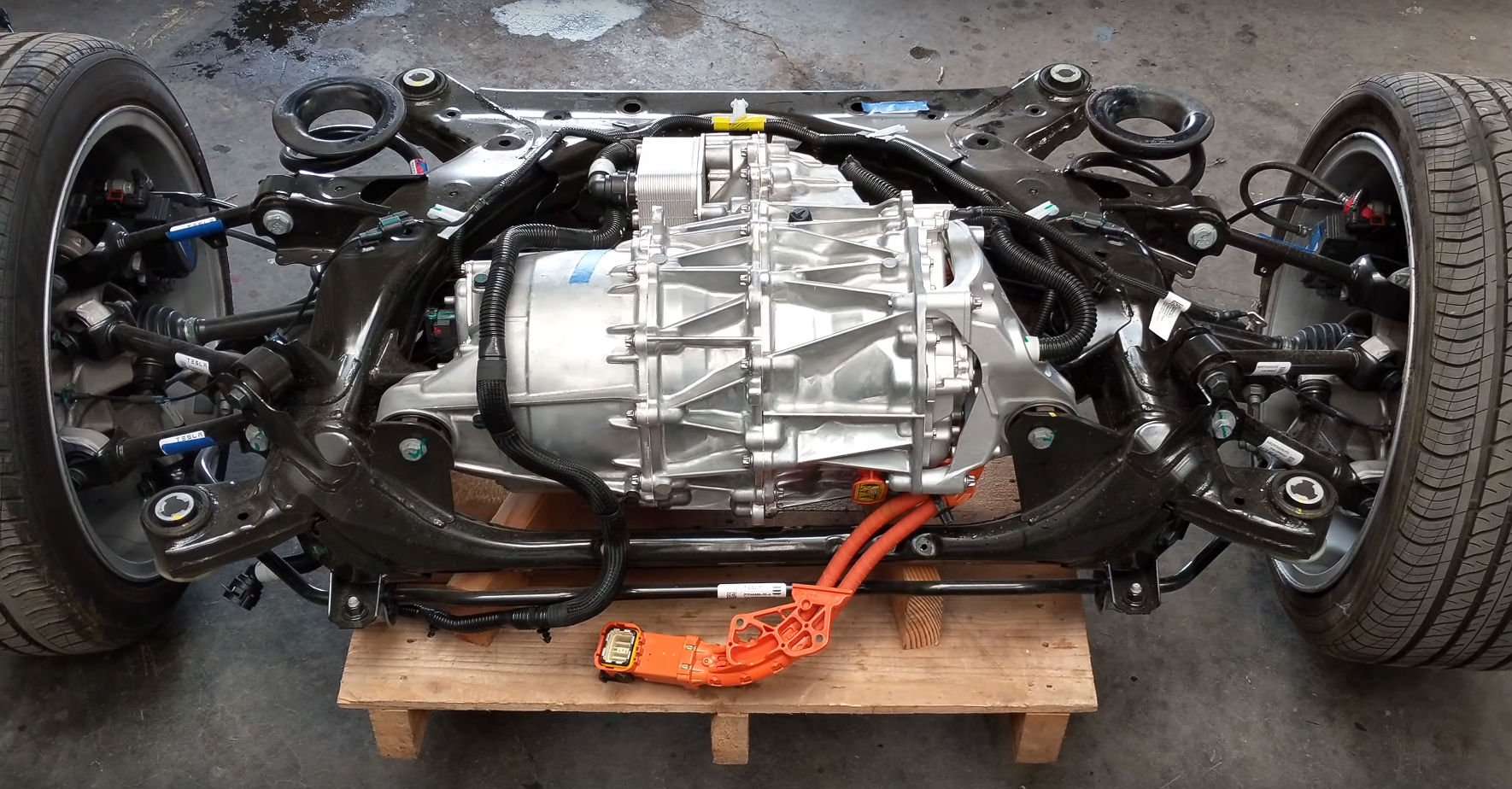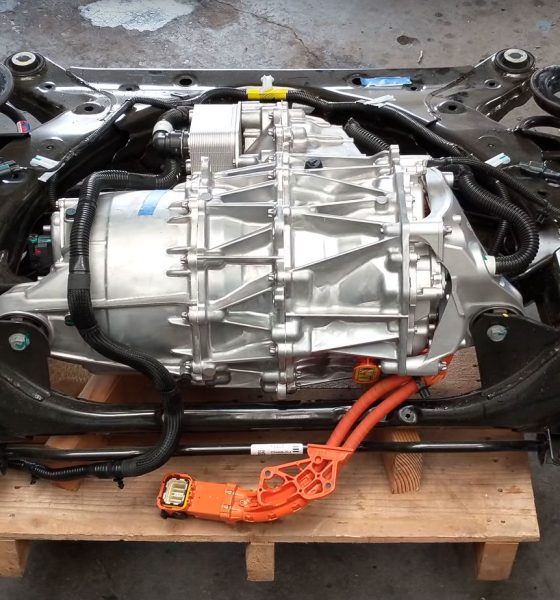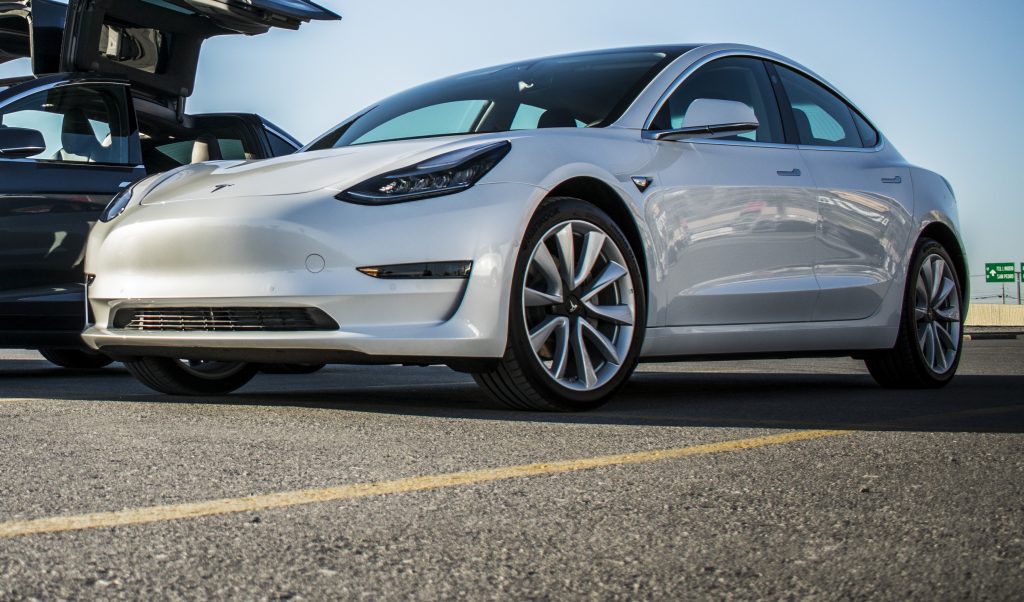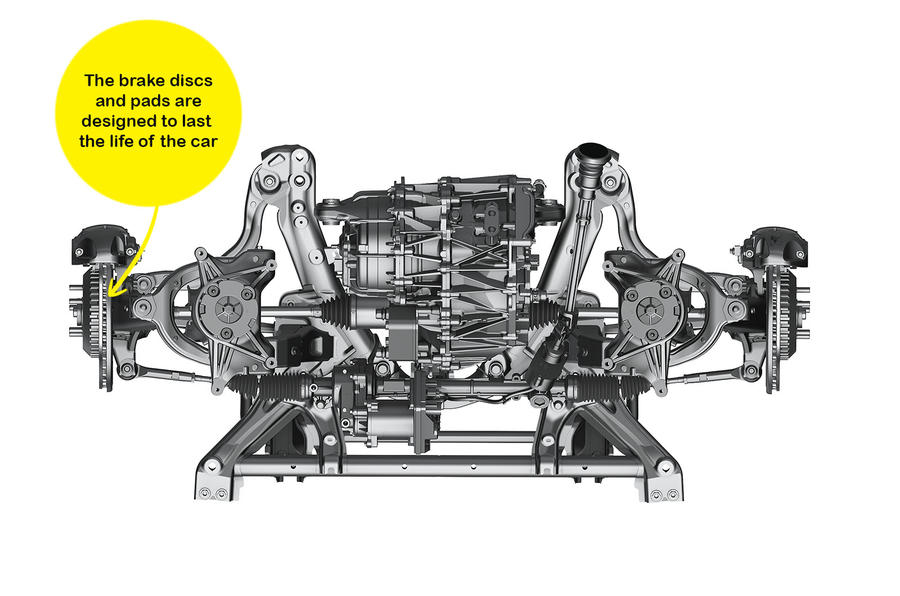

News
Tesla engineers share Model 3 steering, drivetrain, and suspension secrets
The Tesla Model 3 is practically taking over the electric car market, establishing a strong presence in every region where it is released. A key reason behind this lies in the fact that the Model 3 happens to be a really fine automobile that just happens to be electric. It’s quick on its feet, handles nimbly despite its weight, and it provides a ride that is both sporty and comfortable.
One of the UK’s most established motoring magazines, Autocar, spoke with a number of Tesla engineers to gain some insights on the design and development process of the Model 3. The result was an extensive discussion in how a clean-sheet design and a serious commitment to safety could make all the difference when creating a car that is, for all intents and purposes, intended to reinvent the automobile.
Tires
Immediately emphasized by the Tesla engineers was that the Model 3’s chassis and suspension were designed using a ‘first principles’ clean-sheet approach. This started with the Model 3’s tires, which the engineers fondly described as the “unsung heroes” of the vehicle, being critical to its feel and drivability. The development of the Model 3’s tires began back in 2015, when Tesla started working with manufacturers to create the ideal tires for the electric sedan.
The engineers noted that the tires of a high-performance electric car like the Model 3 are challenged in different ways compared to gas-powered automobiles. This is due to a number of factors, including the vehicle’s weight and its instant torque. Since the bulk of an EV’s mass is situated lower down compared to a vehicle with an internal combustion engine, there is less vertical force buildup on the outside pair of tires to generate grip when cornering.
To address this, Tesla focused on tread stiffness, even developing new compounds to deliver a good combination of cornering grip and low rolling resistance for the Model 3’s tires. Sound-absorbing foam placed inside the tire cavity further increases comfort during driving by suppressing noise. The Model 3’s rear wheels hold some interesting secrets as well. The engineers revealed that each rear wheel of the electric sedan has six degrees of freedom, with five links and one damper, though the links are split to allow superior control over forces that are transmitted through the vehicle’s tire contact patch.

Safety Systems and Steering
The Model 3 has earned a perfect 5-Star Safety Rating from the NHTSA, the Euro-NCAP, and the ANCAP. This comes as no surprise, considering that the vehicle is designed from the ground up to emphasize safety. The Model 3’s front suspension, for example, was specifically designed to provide maximum protection in small-overlap frontal collision crash tests.
Sacrificial links that are designed to snap when the front wheel and suspension get damaged are also integrated into the vehicle, allowing the Model 3’s front wheels to rotate. This moves the front wheels outside the Model 3’s body, while pushing the car, its occupants, and its battery pack from the point of impact. These safety systems extend to the Model 3’s dual-motor AWD variants as well.
Tesla designed the Model 3’s electric power steering system to have a rapid 10:1 ratio. The power steering is equipped with full redundancy with separate power feeds taken directly from the vehicle’s high-voltage battery. The engineers also mentioned two electronic modules and two inverters providing “hot backup” to the system if one fails.
Brakes
The Model 3’s braking system is quite unique, in the way that Tesla opted to equip the electric sedan with more expensive four-pot brake calipers at the front wheels instead of a single-piston sliding mechanism. This gives the Model 3 superior pedal response, and it opened the door for the electric car maker to design its own piston seals that fully retract the brake pads after braking; thus, boosting available driving range and cutting drag. Such a system adds to the Model 3’s efficiency, which has proven superior to other premium electric vehicles like the Audi e-tron and the Jaguar I-PACE.
Elon Musk has mentioned multiple times in the past that brake pads in a Tesla will last for the lifetime of a vehicle. This is no exaggeration, according to the Tesla engineers, who noted that the Model 3’s discs and brake pads are designed to last for around 150,000 miles. This is made possible by the Model 3’s regenerative braking system, which allows drivers to slow down the vehicle without using its physical brakes. As for rust issues, the engineers pointed out that Tesla has developed new anti-corrosion techniques for its electric cars.

Suspension
Perhaps the most interesting tidbit discussed by the Tesla engineers involved the Model 3’s suspension. In true Elon Musk fashion, Tesla actually used concepts from NASA when it was refining the suspension settings of the electric sedan. The electric car maker based the Model 3’s suspension settings on a study by the space agency about how long the human body can be subjected to a certain frequency without feeling uncomfortable. Considering that the vertical frequency of a suspension’s movement affects comfort and drivability, Tesla engineers settled on a vertical frequency that is equivalent to a brisk walk or a slow run to give the Model 3’s chassis a comfortable, sporty feel.
The Model 3’s suspension has impressed a number of industry experts, among them being automotive veteran and teardown expert Sandy Munro of Munro and Associates. During his teardown of the vehicle, Munro noted that the Model 3 has areas of improvement in its body and finish, but everything from the electric car’s suspension, all the way down to its tires, is flawless. In a segment on YouTube’s Autoline TV, Munro mentioned that the person who tuned the Model 3’s suspension could easily be an “F1 Prince.”
During the electric car maker’s second-quarter earnings call, Elon Musk mentioned that the “story for Tesla’s future is fundamentally Model 3 and Model Y.” While the Model S and Model X were made to prove that electric vehicles could be superior alternatives to gas-powered premium sedans and SUVs, the more affordable Model 3 — and in extension, the Model Y — would likely be the cars that could reinvent the automobile and encourage mass-market car buyers to rethink what a vehicle could be like. Based on the Model 3’s success so far, it appears that Tesla is so far succeeding in this endeavor.
H/T to JPR007.

Cybertruck
Tesla updates Cybertruck owners about key Powershare feature

Tesla is updating Cybertruck owners on its timeline of a massive feature that has yet to ship: Powershare with Powerwall.
Powershare is a bidirectional charging feature exclusive to Cybertruck, which allows the vehicle’s battery to act as a portable power source for homes, appliances, tools, other EVs, and more. It was announced in late 2023 as part of Tesla’s push into vehicle-to-everything energy sharing, and acting as a giant portable charger is the main advantage, as it can provide backup power during outages.
Cybertruck’s Powershare system supports both vehicle-to-load (V2L) and vehicle-to-home (V2H), making it flexible and well-rounded for a variety of applications.
However, even though the feature was promised with Cybertruck, it has yet to be shipped to vehicles. Tesla communicated with owners through email recently regarding Powershare with Powerwall, which essentially has the pickup act as an extended battery.
Powerwall discharge would be prioritized before tapping into the truck’s larger pack.
However, Tesla is still working on getting the feature out to owners, an email said:
“We’re writing to let you know that the Powershare with Powerwall feature is still in development and is now scheduled for release in mid-2026.
This new release date gives us additional time to design and test this feature, ensuring its ability to communicate and optimize energy sharing between your vehicle and many configurations and generations of Powerwall. We are also using this time to develop additional Powershare features that will help us continue to accelerate the world’s transition to sustainable energy.”
Owners have expressed some real disappointment in Tesla’s continuous delays in releasing the feature, as it was expected to be released by late 2024, but now has been pushed back several times to mid-2026, according to the email.
Foundation Series Cybertruck buyers paid extra, expecting the feature to be rolled out with their vehicle upon pickup.
Cybertruck’s Lead Engineer, Wes Morrill, even commented on the holdup:
As a Cybertruck owner who also has Powerwall, I empathize with the disappointed comments.
To their credit, the team has delivered powershare functionality to Cybertruck customers who otherwise have no backup with development of the powershare gateway. As well as those with solar…
— Wes (@wmorrill3) December 12, 2025
He said that “it turned out to be much harder than anticipated to make powershare work seamlessly with existing Powerwalls through existing wall connectors. Two grid-forming devices need to negotiate who will form and who will follow, depending on the state of charge of each, and they need to do this without a network and through multiple generations of hardware, and test and validate this process through rigorous certifications to ensure grid safety.”
It’s nice to see the transparency, but it is justified for some Cybertruck owners to feel like they’ve been bait-and-switched.
News
Tesla’s northernmost Supercharger in North America opens

Tesla has opened its northernmost Supercharger in Fairbanks, Alaska, with eight V4 stalls located in one of the most frigid cities in the U.S.
Located just 196 miles from the Arctic Circle, Fairbanks’s average temperature for the week was around -12 degrees Fahrenheit. However, there are plenty of Tesla owners in Alaska who have been waiting for more charging options out in public.
There are only 36 total Supercharger stalls in Alaska, despite being the largest state in the U.S.
Eight Superchargers were added to Fairbanks, which will eventually be a 48-stall station. Tesla announced its activation today:
North America’s northernmost Supercharger Fairbanks, AK (8 stalls) opened to public. https://t.co/M4l04DZ6B5 pic.twitter.com/zyL6bDuA93
— Tesla Charging (@TeslaCharging) December 12, 2025
The base price per kWh is $0.43 at the Fairbanks Supercharger. Thanks to its V4 capabilities, it can charge at speeds up to 325 kW.
Despite being the northernmost Supercharger in North America, it is not even in the Top 5 northernmost Superchargers globally, because Alaska is south of Norway. The northernmost Supercharger is in Honningsvåg, Norway. All of the Top 5 are in the Scandanavian country.
Tesla’s Supercharger expansion in 2025 has been impressive, and although it experienced some early-quarter slowdowns due to V3-to-V4 hardware transitions, it has been the company’s strongest year for deployments.
🚨🚨 Tesla Supercharging had a HUGE year, and they deserve to be recognized.
🍔 Opened Tesla Diner, a drive-in movie theater with awesome, Chef-curated cuisine
🔌 Gave access to Superchargers to several EV makers, including Hyundai, Genesis, Mercedes-Benz, Kia, Lucid, Toyota,… pic.twitter.com/yYT2QEbqoW
— TESLARATI (@Teslarati) December 10, 2025
Through the three quarters of 2025, the company has added 7,753 stations and 73,817 stalls across the world, a 16 percent increase in stations and an 18 percent increase in stalls compared to last year.
Tesla is on track to add over 12,000 stalls for the full year, achieving an average of one new stall every hour, an impressive statistic.
Recently, the company wrapped up construction at its Supercharger Oasis in Lost Hills, California, a 168-stall Supercharger that Tesla Solar Panels completely power. It is the largest Supercharger in the world.
News
Tesla shocks with latest Robotaxi testing move
Why Tesla has chosen to use a couple of Model S units must have a reason; the company is calculated in its engineering and data collection efforts, so this is definitely more than “we just felt like giving our drivers a change of scenery.”

Tesla Model S vehicles were spotted performing validation testing with LiDAR rigs in California today, a pretty big switch-up compared to what we are used to seeing on the roads.
Tesla utilizes the Model Y crossover for its Robotaxi fleet. It is adequately sized, the most popular vehicle in its lineup, and is suitable for a wide variety of applications. It provides enough luxury for a single rider, but enough room for several passengers, if needed.
However, the testing has seemingly expanded to one of Tesla’s premium flagship offerings, as the Model S was spotted with the validation equipment that is seen entirely with Model Y vehicles. We have written several articles on Robotaxi testing mules being spotted across the United States, but this is a first:
🚨 Tesla is using Model S vehicles fitted with LiDAR rigs to validate FSD and Robotaxi, differing from the Model Ys that it uses typically
Those Model Y vehicles have been on the East Coast for some time. These Model S cars were spotted in California https://t.co/CN9Bw5Wma8 pic.twitter.com/UE55hx5mdd
— TESLARATI (@Teslarati) December 11, 2025
Why Tesla has chosen to use a couple of Model S units must have a reason; the company is calculated in its engineering and data collection efforts, so this is definitely more than “we just felt like giving our drivers a change of scenery.”
It seems to hint that Tesla could add a premium, more luxury offering to its Robotaxi platform eventually. Think about it: Uber has Uber Black, Lyft has Lyft Black. These vehicles and services are associated with a more premium cost as they combine luxury models with more catered transportation options.
Tesla could be testing the waters here, and it could be thinking of adding the Model S to its fleet of ride-hailing vehicles.
Reluctant to remove the Model S from its production plans completely despite its low volume contributions to the overall mission of transitioning the world to sustainable energy, the flagship sedan has always meant something. CEO Elon Musk referred to it, along with its sibling Model X, as continuing on production lines due to “sentimental reasons.”
However, its purpose might have been expanded to justify keeping it around, and why not? It is a cozy, premium offering, and it would be great for those who want a little more luxury and are willing to pay a few extra dollars.
Of course, none of this is even close to confirmed. However, it is reasonable to speculate that the Model S could be a potential addition to the Robotaxi fleet. It’s capable of all the same things the Model Y is, but with more luxuriousness, and it could be the perfect addition to the futuristic fleet.








